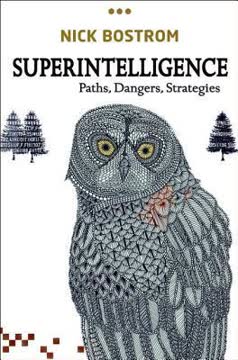Key Takeaways
1. Analogical Instinct Fuels Human Thought and Decision-Making
All day every day, in fact, we make or evaluate one analogy after the other, because such comparisons are the only practical way to sort a flood of incoming data, place it within the context of our experience, and make decisions accordingly.
Core of Cognition. The human mind is wired to seek patterns and make comparisons, allowing us to understand abstract concepts by relating them to familiar experiences. This analogical instinct is fundamental to how we process information, make decisions, and navigate the world. Without it, we would be overwhelmed by the sheer volume of sensory input.
Evolutionary Advantage. This ability to quickly detect differences in patterns, such as distinguishing a crocodile snout from a log, provided a survival advantage for our ancestors. It allowed them to infer potential dangers and react accordingly. This instinct extends beyond mere pattern recognition, enabling humans to identify and exploit conceptual similarities that go beyond the superficial.
Ubiquitous in Daily Life. Analogies appear in many forms, including metaphors, similes, slogans, legal arguments, and even mathematical formulas. They play a much bigger role than most people recognize, often triggering emotions that override reason. By understanding how analogies work, we can become more aware of their influence and make better decisions.
2. Analogies Structure Arguments and Shape Outcomes
In many arguments, whoever has the best analogy wins.
Framing Perspectives. Analogies act as mental models that frame situations and arguments, influencing how we think and the conclusions we reach. They can subtly shape our perceptions, leading us to accept certain assumptions and overlook others. The "argument is war" metaphor, for example, structures our language and approach to debates, often leading to adversarial and unproductive interactions.
Impact on Policy. The "three strikes and you're out" analogy, borrowed from baseball, led to the passage of mandatory sentencing laws with significant unforeseen consequences, including the lengthy incarceration of nonviolent offenders. Similarly, the "domino theory" analogy propelled the United States into the Vietnam War, with devastating results.
Analogies in Business. In the business world, the "business is war" analogy often justifies morally questionable actions in the name of competition and profit. Recognizing the power of analogies allows us to critically evaluate their implications and choose more appropriate models for decision-making.
3. Analogies Spark Innovation by Revealing New Possibilities
From the bloody Chicago slaughterhouse that inspired Henry Ford’s first moving assembly line, to the “domino theory” that led America into the Vietnam War, to the “bicycle for the mind” that Steve Jobs envisioned as a Macintosh computer, analogies have played a dynamic role in shaping the world around us.
Connecting Disparate Fields. Many significant innovations arise from drawing parallels between seemingly unrelated domains. Johannes Gutenberg's printing press was inspired by wine presses, while the moving assembly line was inspired by a slaughterhouse. These connections reveal the power of analogical thinking to generate novel solutions.
Expanding the Adjacent Possible. Analogies help us explore the "adjacent possible," the range of potential innovations that lie just beyond the current state of knowledge. By recombining existing ideas and technologies in new ways, analogies can unlock previously unimagined possibilities.
Biomimicry. Nature provides a rich source of inspiration for innovation. Velcro was inspired by burrs, while Speedo's LZR swimsuit was inspired by sharkskin. By studying and mimicking natural systems, we can develop more efficient and sustainable technologies.
4. Persuasive Analogies Engage Emotions and Simplify Complexities
Not just because analogies make arguments, but because they often trigger emotions that override the circuits of reason, and sometimes at a subconscious level.
Emotional Resonance. Effective analogies tap into our emotions, making them more memorable and persuasive. Ronald Reagan's "Morning in America" ad evoked feelings of optimism and patriotism, while John Roberts' "umpire" analogy reassured voters of his impartiality.
Simplifying Complex Issues. Analogies can distill complex issues into easily understandable terms, making them more accessible to a wider audience. The "rising tide lifts all boats" analogy, for example, simplifies the concept of economic growth and its impact on different segments of society.
Framing the Debate. By choosing a particular analogy, we can frame the debate in a way that favors our position. However, it's important to be aware of the potential for manipulation and to critically evaluate the underlying assumptions of any analogy.
5. Effective Analogies Use Familiar Concepts to Explain the Unfamiliar
First, one can only describe or explain something new in an effective way by using concepts with which an audience is already somewhat familiar.
Bridging the Knowledge Gap. Analogies work by connecting new information to existing knowledge. By using familiar concepts, we can make complex ideas more accessible and easier to understand. Apple's "desktop" interface, for example, leveraged people's familiarity with physical desktops to make computers more user-friendly.
Visual and Tactile Connections. Visual and tactile analogies are particularly effective because they engage our senses and create stronger mental connections. The image of a toilet seat, though unflattering, was more memorable than the abstract notion of "continental flair" in describing the Ford Edsel.
Cultural Relevance. The effectiveness of an analogy depends on its cultural relevance. Analogies that resonate with one audience may not resonate with another. Understanding your audience is crucial for choosing the right analogy.
6. Beware of Faulty Analogies and Their Potential for Misdirection
Similarly, poor analogies have misled many people, companies, and nations into dead ends and disasters.
Oversimplification. Analogies can oversimplify complex issues, leading to inaccurate or incomplete understandings. The "government-as-household" analogy, for example, ignores the fundamental differences between household and government finances.
Misleading Implications. Analogies can carry unintended implications that distort our thinking. The "war on terror" analogy, for example, has led to the erosion of civil liberties and the justification of questionable military actions.
Emotional Manipulation. Analogies can be used to manipulate emotions and bypass rational thought. Hitler's description of Jews as a "virus" was a blatant attempt to incite hatred and justify genocide.
7. Context and Perspective are Crucial in Evaluating Analogies
But any given analogy’s “truth” is intrinsically subjective.
Subjectivity of Truth. The "truth" of an analogy is subjective and depends on the context and perspective of the individual evaluating it. What resonates as true for one person may not resonate for another.
Competing Analogies. In many situations, competing analogies offer different perspectives on the same issue. Evaluating these analogies requires careful consideration of their strengths and weaknesses, as well as their underlying assumptions.
Evolving Interpretations. The meaning and relevance of analogies can change over time. What was once a useful analogy may become outdated or misleading as circumstances evolve.
8. Recognizing and Managing Analogies Enhances Critical Thinking
Despite the ubiquity and impact of analogical thinking, most people are unaware of just how much this core process influences their decision making.
Increased Awareness. By becoming more aware of the role of analogy in our thinking, we can make more informed decisions and avoid being misled by faulty comparisons. This awareness involves recognizing analogies in disguise and critically evaluating their underlying assumptions.
Developing Critical Thinking Skills. Evaluating analogies requires a range of critical thinking skills, including the ability to identify similarities and differences, assess the relevance of information, and consider alternative perspectives.
Promoting Intellectual Humility. Recognizing the limitations of analogy can foster intellectual humility and a willingness to consider alternative viewpoints. This is essential for productive dialogue and collaborative problem-solving.
Last updated:
Review Summary
Shortcut explores the power and pitfalls of analogies in communication and innovation. Readers appreciate Pollack's engaging writing style and historical examples demonstrating how analogies shape decisions, persuade audiences, and spark creativity. The book outlines criteria for effective analogies and reveals their pervasive influence in everyday thinking. While some found the explanations obvious or politically biased, many readers found the book thought-provoking and useful for improving critical thinking and communication skills. Overall, it's considered an entertaining and informative read about the impact of analogies on human cognition and society.
Similar Books










Download PDF
Download EPUB
.epub digital book format is ideal for reading ebooks on phones, tablets, and e-readers.




